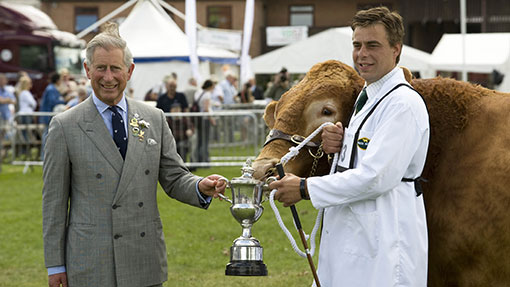RASE bows to pressure over farm silverware auction

The Royal Agricultural Society of England (RASE) has been forced to withdraw more than 40 silver trophies and a small selection of paintings from an auction, which it hoped would raise up to £300,000.
The shock move – just 24 hours before the items were due to go under the hammer – follows pressure from breed societies and descendants of the people who first donated the cups to the organisation.
It emerged last month that the RASE had been forced to put its art, book and silverware collections up for sale in a bid to clear a deficit in its pension scheme for past employees. It was hoped the sale would raise £200,000-300,000.
See more: RASE to auction off book and silverware collection
Many of the trophies had previously been used at the Royal Show, until its demise in 2009.
David Gardner, RASE chief executive, said: “We have withdrawn at least 40 trophies. We’ve been asked by breed societies and some private individuals to do so. We felt that it was the right thing to do.”
A collection of 45 miniatures by painter Richard Ansdell have also been removed from the catalogue.
The rest of the collection is due to be auctioned off by Dreweatts & Bloomsbury Auctions in London at 1pm on 11 July. Potential buyers have also been able to see the lots and make bids through an online auction system.
The sale has provoked a strong reaction in the farming community and drawn criticism from rural historians.
The Museum of English Rural Life (MERL) said it was disappointed at the RASE’s decision and confirmed a museum representative would attend the auction to bid for a number of items.
“It has clearly got to a dire stage if you literally have to sell the silver,” said MERL archivist Guy Baxter. “It is disappointing that they can’t keep their collection.”
Based at Reading University, MERL houses the country’s national collection of objects, books and archives relating to the history of farming and the countryside.
Mr Baxter told Farmers Weekly that MERL had been in high-level talks with RASE over the sale.
The museum had also approached a number of major funders in an attempt to save some of the RASE items for public collection, said Mr Baxter. There was no way that the museum could save the entire collection for the nation, he added.
“We are desperately fundraising but obviously I can’t say which items we are interested in,” he said. “If we come in revealing our hand too much, it will drive the prices up.”
The ideal future for the collection was for it to remain at Stoneleigh Park, Warwickshire. But Mr Baxter said it was clear RASE felt this was no longer an option.
“It is a shame they have been forced to do this in such a rush. I have spoken to people and they are very angry about it – it clearly hasn’t been done in a very open way.”
The most expensive lot is a Sir Walter Gibley collection of 18th- and 19th-century pamphlets on agricultural, economic and social matters, which is guided at £15,000-20,000.
